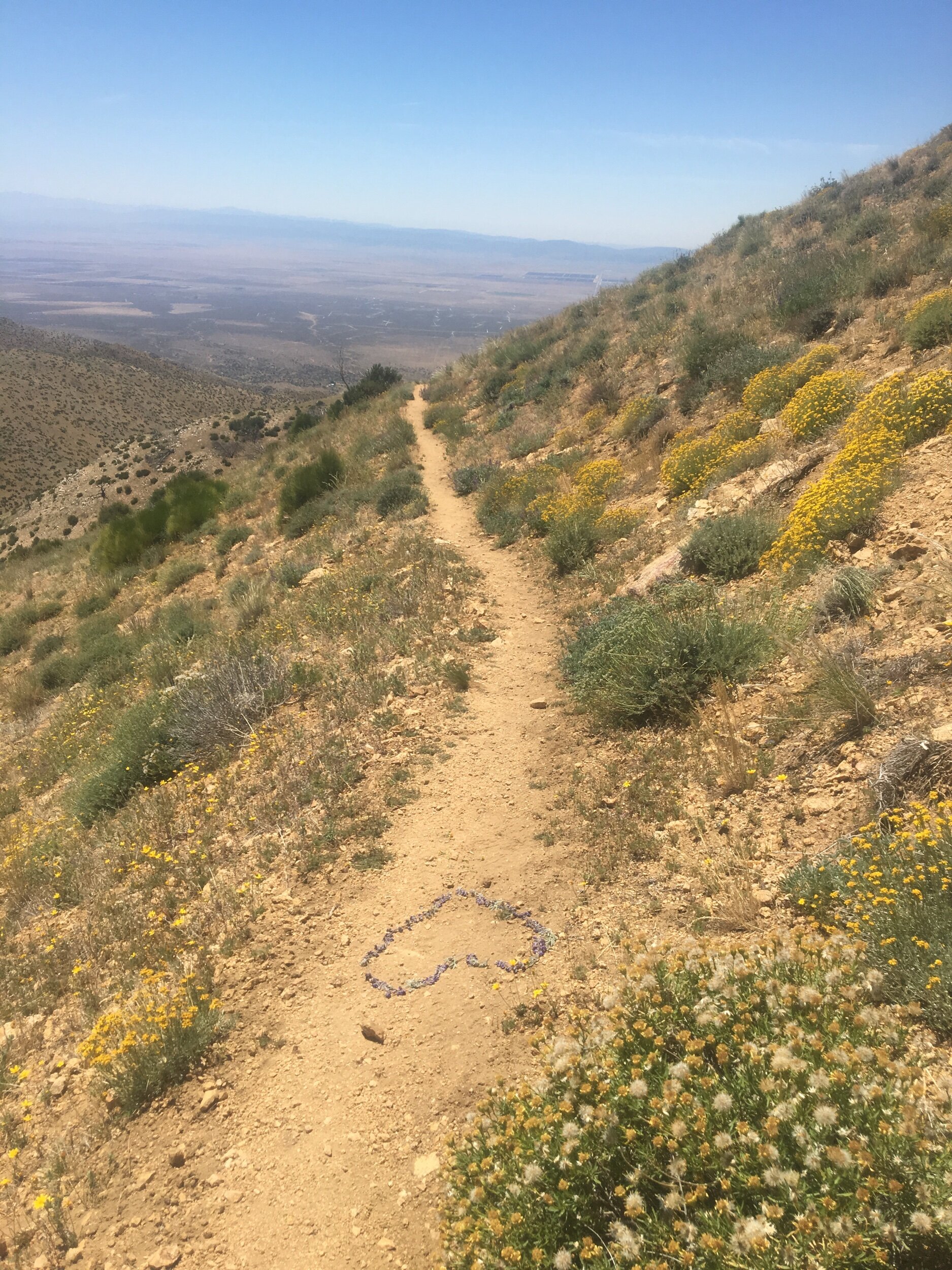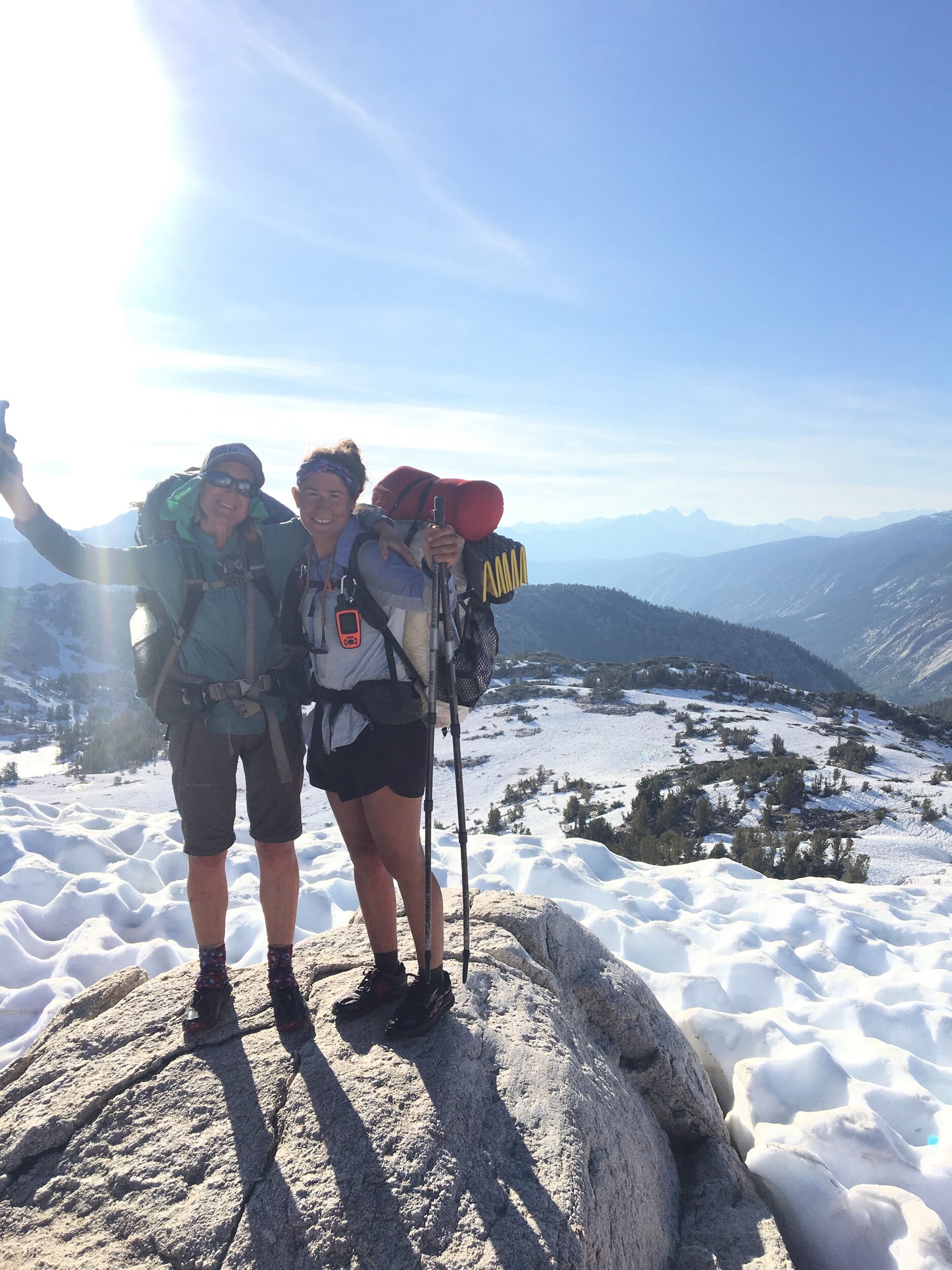Dear ‘PCT Class of 2023’ friends and family - they will be fine.
If the thought of your loved one thru-hiking the Pacific Crest Trail is keeping you up at night, I got you!
Be their biggest cheerleader as they embark on an adventure of a lifetime, with this round up of what to expect before, during and after their hike.
What is thru-hiking? Thru-hiking is a term used when you hike the full distance of an established long distance hiking trail (like the PCT) in one go, travelling in one direction from start to finish. If you didn’t get off trail for an extended period of time, you are a thru-hiker!
What’s involved in hiking the Pacific Crest Trail (PCT)?
Key facts:
Distance covered - 2,654 miles
Hike from the USA/Mexico border to USA/Canada border (or vice versa)
Hike through California, Oregon & Washington
Planning, preparation and over-thinking everything! There is a lot that goes into preparing to hike the PCT, from deciding which direction to hike and applying for the permit - to sorting out life admin, like what to do about your house, car, job etc.
Every year the PCT gets more and more popular - which on the one hand is great as they won’t be hiking alone. The flipside is that it’s getting a lot harder to get a permit.
The Pacific Crest Trail is one of three long distance hikes in the USA, alongside the Appalachian Trail and the Continental Divide Trail - known as the Triple Crown of Hiking.
What to expect before they start hiking.
Before they even step foot on the trail, there are a few key things to sort out:
Save money ~ thru-hiking for 4-6 months isn’t cheap, especially if they need to buy all the gear (budget tools).
Decide which direction to hike ~ SOBO (southbound) or NOBO (northbound).
Get a permit from the Pacific Crest Trail Association (PCTA) ~ permit application is limited to selected dates only and there is a limited number available.
Food re-supply strategy - there are a few stops on the trail where they will need to send a box ahead of time.
-
A permit is required to hike the PCT and securing their preferred start date is the first step.
Gaining permits is getting harder and the PCTA changed the application process in 2023.
Planning for the hike can only really kick into gear once their application has been processed and approved by the PCTA (takes 1-3 weeks).
From this point, it’s officially on!
-
Hikers manage their food re-supply in many different ways, however it largely falls into one of two strategies:
Send boxes ahead - some hikers like to send food boxes ahead and collect at a Post Office in each town.
Re-supply on trail - some hikers prefer to re-supply on the trail, removing the need to send multiple boxes ahead (saving money on postage).
-
Don’t stress if they aren’t training!
Rest assured, they will get their hiking legs on the trail.
For the first few weeks, most people average around 3 miles an hour and by the end of the hike they could be hiking anywhere from 25+ miles a day.
-
They will be camping in the wilderness, where they simply set up their tent or hammock in the backcountry, without any facilities in the area.
They might plan a few weekends away before they leave, so that they can get used to setting up their tent and check that they have all the right gear.
Hear from previous PCT hikers:
Chippy, from Perth, hiking the Sierras in 2019.
Learn more about the trail by reading what previous hikers share about their experience.
Check out Chippy’s experience on the PCT in 2019.
What to expect when they start hiking.
Life on the trail is simple, beautiful and hard!
Good days, bad days - they will experience them all. A huge part of hiking a long distance trail is the people they will meet along the way - including trail angels and tramily!
The good news is that the trail is well marked and the FarOut (formerly Guthook) app is fantastic, working offline so they will know where they are at all times.
-
The sense and feeling of camaraderie on the trail is over-whelming and one of the things that hikers will miss the most once they have completed their hike.
There is a true sense of community on the trail and they will make fast friends as they share the ups and downs of hiking for miles everyday. with like-minded people with a shared goal.
-
It’s all about the ‘tramily’ - trail family.
If they are hiking with the same people for a while, they will become their trail family.
-
Local communities that surround the trail in the nearest towns are used to hikers and are extremely hospitable.
The local community is welcoming to PCT hikers and they are used to seeing ‘hiker trash’ in their town!
Learn some more hiker jargon - like hiker trash, Tramily, zeros and neros, trail angels and more!
-
Introducing your new best friends!
Trail angels are local people who help thru-hikers with lifts to and from the trail to town, leave food on the trail (trail magic), host people at their house and most importantly, give great hugs when they need it!
You may not hear from them as much as you would like, however there are a few options available as and when they are areas with limited or no service.
-
Something to bear in mind is that they aren’t going to know where they will be at every given point.
It can be hard to pin-point the exact date and time when they will arrive at the next town, so you will need to be prepared to not hear from them for a few days at a time.
A lot of the areas they are hiking may have limited or no cell service.
Ask them to get the social check-in feature on the FarOut app (you will need to download the app) so you can track their progress.
If they are carrying a GPS satellite device (e.g. SPOT or Garmin InReach), you will know where they are via GPS tracking.
A GPS device is great for peace of mind, as it works when their mobile is out of service (e.g. they can still send a text or notify emergency responders of their GPS location at a push of a button).
-
There’s no easy way to say this.
It’s going to be tough to meet up. Try not to take it personally if they can’t meet up with you as planned during their hike. It’s hard to leave your tramily (trail family) or ask them to hang back for a few days so that you meet up.
With the best intentions in the world, it may mean that they have to leave the group they have been hiking with, which is a hard thing to do when you are on the trail.
-
When they call you from the trail, ask how many miles they hiked that day, when is their next town day, how is the tramily?
If they are talking about leaving the trail, try to fight the urge to tell them to come home.
They will experience ups and downs on the trail and they might just need to vent and hear a familiar voice for comfort.
-
Town days are the best! Town days are a lot of fun and your best bet to talk to them.
Typically, they will be in a town every 4 to 6 days.
Town days are busy as there is a lot to get done in a short space of time - shower, laundry, eat loads of food that they can’t eat on the trail, charge all their devices and get a food re-supply for the next section.
This is where they make take a ‘zero ‘- e.g. a day off from hiking with zero miles hiked! The other option is a nero, where they might hike a few miles into town and then stay the night.
They might stay in local hotels and motels, filling the room with as many hikers as possible to save money!
A lot of things will be out of their control when they are hiking, from extreme weather conditions and injuries to trail closures.
-
Only one in four thru-hikers successfully complete their hike.
There are many reasons why hikers exit the trail early. Injuries are fairly common, as well as uncontrollable factors like extreme snow years and fires.
-
In 2022, most hikers on the PCT were effected by multiple trail closures which meant that sections of the trail were closed to PCT hikers. This is likely to be more common every year for the PCT, making it increasingly difficult to walk in one direction from the start to the finish.
One of the main causes of the trail closures is fires that are located close to the trail.
Trail closures can have a negative impact on morale, as hikers are torn about whether to skip the closed section and pick right back up again from there, or to ‘flip flop’ and head up the trail and hope that when they reach the trail at a later point, it will have re-opened.
For a lot of thru-hikers, the end goal is to reach the North Terminus or South Terminus and celebrate what marks the end of the trail.
In 2022, the Northern Terminus was closed due to fires and it was a devasting blow to a lot of people.
-
At the start and end of the PCT, there is a terminus - an iconic landmark for PCT hikers.
With the majority of people hiking NOBO (northbound from Mexico to Canada), their trip will start with a mini-photo shoot at the Southern Terminus and finish with an emotional celebration at the Northern Terminus.
Southern Terminus - located in El Campo, California (on the USA and Mexico border)
Northern Terminus - located 30 miles from Harts Pass (on the USA and Canada border)
What to expect when they return home.
It’s bitter sweet! They will be glad to return home and reunite with friends and family and relish in creature comforts.
On the other hand, they will miss the trail and new friends made. Often finding it hard to re-adjust to ‘normal’ life.
-
Translation?
They may want to do it again!
A lot of people start with the PCT and then hike the Appalachian Trail or Continental Divide Trail.
-
Spending months in the outdoors is going to leave a mark and it might be difficult to settle back into the swing of things straight away.
Try and be supportive, as it might be hard to meet up with friends and family who don’t understand why they would want to hike for months and might appear to be critical of their different views.
-
Get familiar with some hiker jargon and fight the temptation to roll your eyes when they start talking about their ‘tramily’ (trail family) and refer to their new friends by their trail name.
Happy ‘trailversary’ - celebrate the 1st year anniversary of when they started their hike, it’s a date they won’t forget!
-
Many thru-hikers return home from the trail and can find it difficult to return to ‘normal’ life, experiencing post trail depression.
This is extremely common as they have spent months in nature burning through the miles and endorphins, all whilst being surrounded by a welcoming community of like-minded people with a shared goal.






















